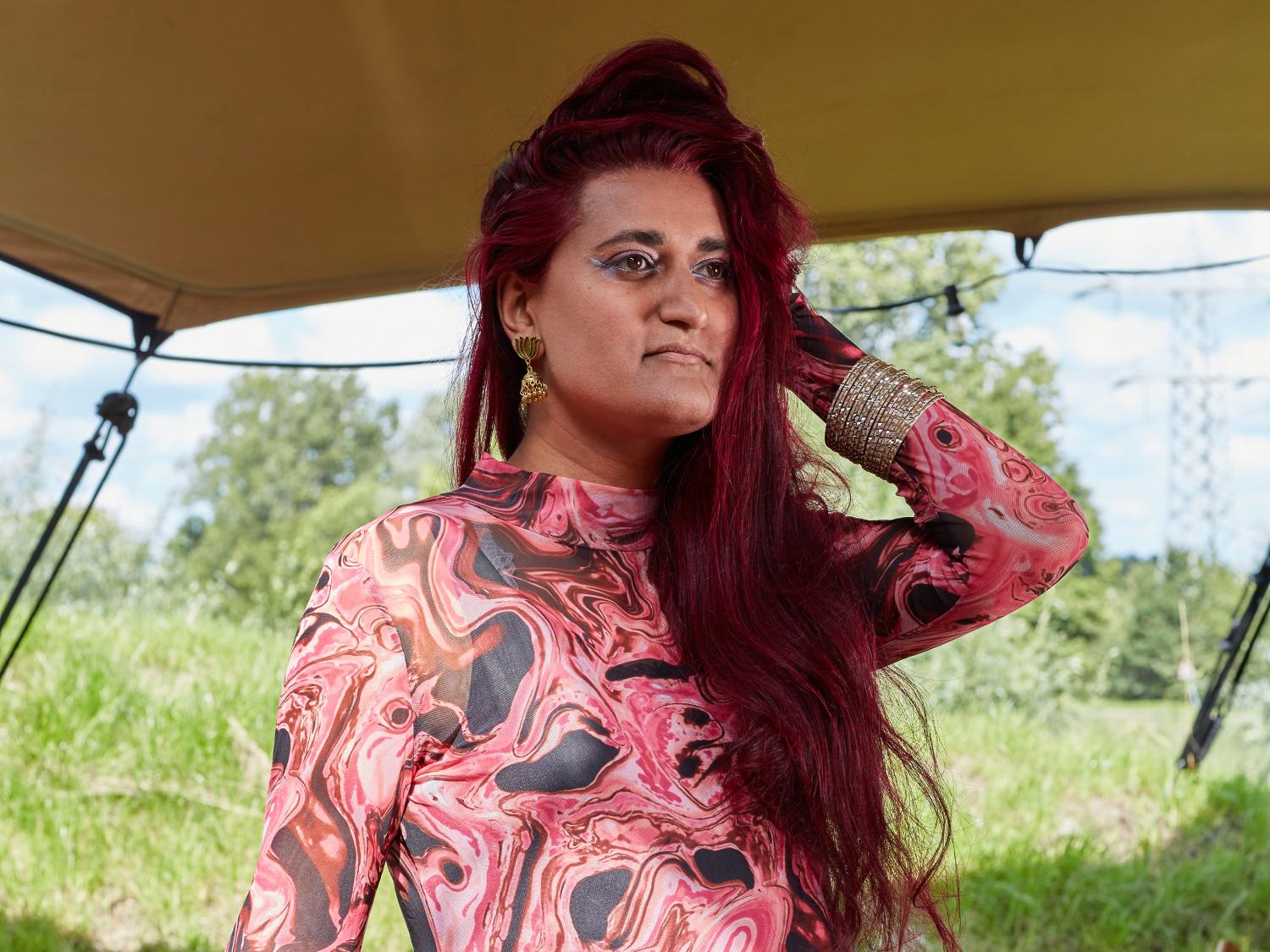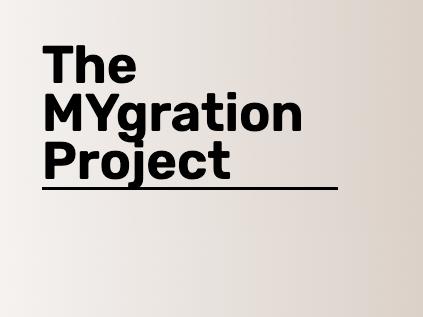Shi Ying
Shi Ying came to the Netherlands from China with her parents in 2015. As Christians they were no longer safe and had to flee.
Read more
Q: What do you like to do?
A: I like tennis, I have been doing this for almost 25 years. In 2021-22 I sometimes played less due to
my transition.
Q: Who is your biggest childhood idol?
A: Serena & Venus Williams! When I was young, they were almost the only tennis players of color. They
played tennis in a fascinating, powerful and elegant way. Much more fun to watch than many other players of
the time.
I was born in Tilburg, Brabant, in 1983 and grew up in Boxtel. Officially I am not a 'migrant', but I often feel that way: as a Pakistani, as a Dutch person, as a Muslim, and as transgender, I constantly migrate between different cultures and genders.

I was raised in both the Pakistani and Dutch culture, at home and at school.
My father first came to the Netherlands at the age of about 16. He left his village in Pakistan in the 1970s for a better life elsewhere. His family had saved up for the necessary travel money, borrowing some of it from my mother's family and others. He quickly found a job as a production employee in a furniture factory in Sint-Oedenrode. My mother followed shortly after, as a result of the marriage their parents had arranged in the home country. Her family was one of the most wealthy in the village: my grandfather, who used to be a teacher, had opened a shop in housing and construction materials, years before.
I was raised in both the Pakistani and Dutch culture, at home and at school. I was bullied a lot at school. Not necessarily because I had a different, non-Western background – after all, I went to a so-called 'black school', where more than half of the students had parents from abroad. In fact, there were only three originally Dutch children in our class. No, I was bullied because of my gender. Because I may not have looked like the other boys – my behavior was more 'feminine' than that of other boys, and my voice was most likely quite a bit higher- I was quickly labeled a 'girl' or 'gay'. Of course there is nothing wrong with the name itself; but it was the bullying that hurt me.

This was a stark contrast to my very earliest childhood. I lived in Pakistan between the ages of 1 and 5. Here, I felt that I was being received very lovingly. We lived in my father's house and his family, surrounded by uncles, aunts, grandfathers, grandmothers, where I was allowed to be completely myself. For example, I was allowed to wear bracelets, and could express myself in a more ‘feminine’ way: something for which I would later be called a 'sissy' in Boxtel.

In Pakistan denken we al duizenden jaren veel minder in ‘binaire’ genders: er zijn weliswaar mannen en vrouwen, maar ook ‘andere’ genders.
I think I was surrounded with so much extra love partly because I had a kind of special status: after all, I was the only grandchild at the time, and also the first of the family born in a Western country. However, there was probably another reason: in Pakistan we have been thinking much less in terms of 'binary' genders for thousands of years: there are men and women, but also 'other' genders. This manifests itself most in the 'hijra', a general term to describe transgender women in Pakistan and surrounding countries. In Pakistan we are officially recognized as a 'third gender': I can have it stated on my passport that I am transgender. What was considered 'different' in the Netherlands was not so much so in Pakistan.
That doesn't change the fact that my parents would have preferred that I not be queer, that I would have turned out to be a traditional Pakistani man with a wife and two children. I didn't come out of the closet right away: it wasn't until I was 26 that I shared more about myself on television, with Sophie Hilbrand on BNN. I talked about being 'gay' (which is how I identified myself more at the time) – after all, I didn't know what the consequences could be at home. The broadcast took place when my parents were in Pakistan for three months, so I thought they wouldn't see it. Ultimately, of course, it came to their attention, and my coming out on television was not so well received – it was seen as shameful.

They accept me, but there is also a lot of rejection. I have felt partly free, but freedom and 'fighting' for it comes with a price. Nowhere are trans people completely accepted. I feel both Pakistani and Dutch, although no culture is of course set in stone. The 'Pakistani' in me lies partly in my desire to always give 'the best of myself' to others. If you share a sandwich, you give the other person the tastiest part. If someone is staying with you, you give them the most comfortable room. The other person is always more important than yourself. Although I notice that this is also changing worldwide; people are increasingly forced to prioritize themselves. I also follow Islamic and Pakistani customs like applying henna on my hands. For me it is a combination of religion, culture and spirituality – it is all connected for me as a person.

Sometimes I refer to 'you Dutch', other times I say 'we'.
The 'Dutch' element in me manifests in my practical approach to life. For example, when I prepare dinner for me and my Iranian/Persian boyfriend, he thinks it is 'too little': I should always cook at least two times what’s needed. Ultimately, it varies per situation with which identity I associate myself. For example, sometimes I refer to 'you Dutch', other times I say 'we'. I have, as it were, taken elements from all identities and made something of my own. That is my intersectionality.
In my daily life I help folk in a similar position as myself. In 2017 I founded the Prisma Group foundation, after having worked with these specific target groups for several years. Our mission is primarily to support BIPOC (Black, Indigenous, and people of color) and LGBTQI+, by helping undocumented people to prepare themselves as best as possible for the asylum procedure within the Immigration and Naturalist Service (IND). And to provide them with knowledge about Dutch society. I help these people tell their stories, in the (often quite legal) language of the IND. I sometimes feel a tension here: on the one hand, I don't believe that you can put people in boxes. On the other hand, you have to speak the language of the bureaucratic system to get a place for yourself: for example, a place as a 'queer asylum seeker'.

By now I usually feel very good about my 'transition'. The spiritual aspect is the most important to me. It's not about taking hormones, surgery, and so on. That only represents a superficial aspect, as we as trans women have to adapt to live the safest lives possible. At the same time, seeing our inner beauty reflected in the external appearance, is one of the most beautiful experiences: seeing yourself in the mirror as a beautiful person, a beautiful entity.
This is how I will always continue to migrate. As a Pakistani, as a Dutch person, as hijra.
'Hijra' comes from the Arabic word 'hijr' which means 'migrate': her experience is that trans people always have to migrate from their neighborhood, family, loved ones, country and gender.
Interview: Joost Backer
Editing: Joost Backer & Izzy Bauman
Photography: Esther Frank
MYgration is a collaboration between the Wijdoenmee! Initiative, the Haella Fund, Correspondents of the World, and Broadcast Amsterdam.
Public discourse around migration continues to be polarised in the Netherlands. On both ends of the spectrum, immigrants, refugees and asylum seekers are often spoken about in mainstream media, with resulting stories maintaining an us/her divide. MYgration seeks to bridge this divide through providing a space where people can share migratory stories in her own words and on her own terms. In doing so, MYgration offers a multi-dimensional portrait of the ‘migrant experience’.
Please help us share these stories in any way you can. Together we can improve my society's understanding of migration and the people involved.

Shi Ying came to the Netherlands from China with her parents in 2015. As Christians they were no longer safe and had to flee.
Read more
Pavel and Evgenii came to the Netherlands in 2018. They fled their home country Russia after threats from the Russian government regarding their gay marriage.
Read more
Zeynep was born in Kürecik in Turkey. In 1985 she came to the Netherlands as a Kurdish political refugee.
Read more
Max came to the Netherlands in 1951 as a toddler, because his father had served in the Royal Dutch East Indies Army (KNIL).
Read more
Ghada taught English in Syria – while raising her six children. When her eldest son was at risk of conscription, they fled the country.
Read more
Through this project you will meet various people who, for various reasons, have left her own country to come to the Netherlands. Learn why.
Read more© 2024 by Correspondents of the World.
Template by CocoBasic. Webdesign by Janosch
Haber. Contact: joost@correspondentsoftheworld.com